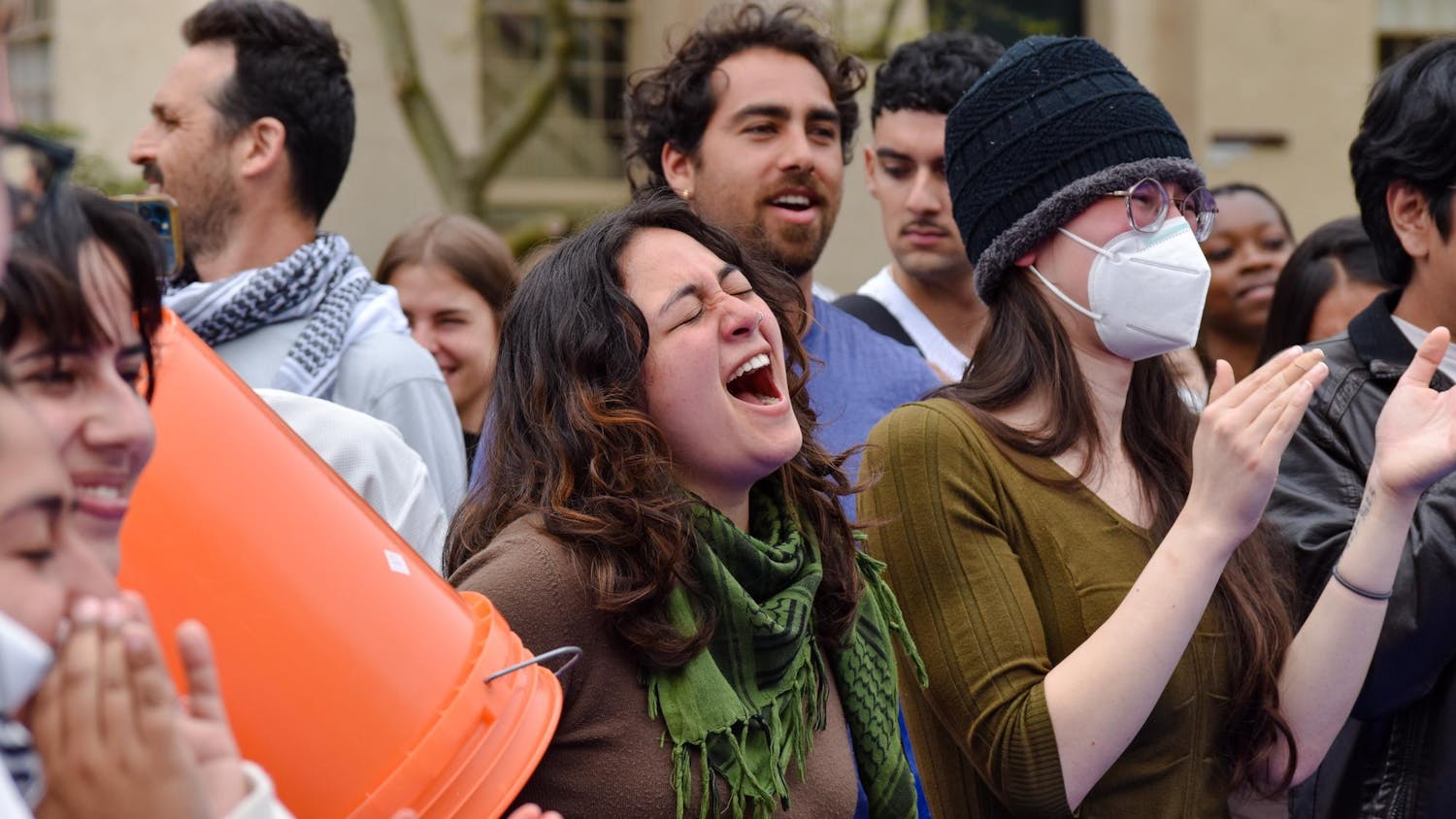The graduate student body has grown 14 percent since a May 2008 report by the Working Group on Graduate Education recommended expansion, according to Dean of the Graduate School Peter Weber P'12. With 1,905 students enrolled in 48 PhD and 24 master's programs as of last fall, Weber said the school intends to continue to increase both the number of students and the number of degree programs in the future.
The committee, which consisted of professors, graduate students and administrators, developed six long-term recommendations for the Grad School, including the continued growth of the student population and increase in the number of programs offered. Other objectives included funding, diversity, instruction and data assessment.
Prior to the enrollment increases, small incoming classes — as few as two students in some humanities programs — made it difficult for "cohort formation and peer learning," according to the report.
Jeremy Powell GS, a fourth-year doctoral candidate in the Department of Modern Culture and Media, which matriculates only two or three new students a year, agreed that creating a "cohesive cohort" is more difficult in small programs. He cited the "Current Perspectives in MCM" graduate symposium as a program designed to build community and provide a venue to present work but said these activities have been limited and largely organized "from the ground up."
Powell said he was not aware of any initiatives being planned by the Grad School to address these issues, adding that in many departments, there have not been "enough students to warrant or even support" such programs. But as the number of grad students increases, community-building programs may "start to develop more naturally," he said.
For Seth Kadish GS, a fifth-year doctoral candidate in the planetary geosciences, the small size of his program — about 20 students — has not been an issue. "The department may seem small, but it seems more crowded than some others," Kadish said, explaining that, for his program, most of the students' workstations are housed in a single room. "We're using the same software, the same data — it's incredibly collaborative," he said.
Though some programs may not grow immediately, the recently formed School of Engineering will certainly expand, Weber said. Computational biology admitted its first doctoral class last fall, and the first two PhD students in Africana studies will enroll next semester. Lawrence Larson, the newly announced dean of engineering, will be involved in supplementing the school's current offerings with courses and research in fields such as bioengineering and entrepreneurial studies, according to a March 4 Herald article.
"We have a good size in some programs, but others still have a capacity to grow," Weber said.
He said there is also potential for significant growth in the master's programs — one of the Grad School's highest priorities.
‘Acute need'
The working group identified summer funding and conference travel support as areas of "acute need." At the time the report was issued, summer funding for doctoral students was limited to $2,500 for each of three summers, less than the stipend given to students for an Undergraduate Teaching and Research Award.
Though the Grad School has not added to that annual limit, it has increased the guarantee of summer support from three to four years, a decision Powell called "a definitive move in the right direction." The increase was implemented starting with students who matriculated this year.
But Powell said "offering someone a fourth year of summer funding potentially at the expense of sixth-year assistantship is not a good thing." The University currently guarantees doctoral students five years of funding, and according to Powell, a sixth year of funding has been generally available. But there may be a "move coming down the pike to curtail the vast majority" of sixth-year support, Powell said.
In many humanities disciplines, it can take longer than five years to complete a PhD, Powell said.
Weber is currently meeting with doctoral students to "hear their thoughts about funding beyond the five-year guarantee and to discuss potential changes to the process of seeking and distributing funds," Beverly Larson, director of communications for both the Grad School and the office of the vice president for research, wrote in an e-mail to The Herald.
As a supplement to summer funding, which is part of the overall support package for PhD candidates, the Grad School began to offer summer research grants in July 2007. In the 2008-09 academic year — the academic year following the publication of the working group's recommendations — 51 awards totaling $165,329 were made to students, a massive increase over the $15,200 awarded the year before, Larson wrote in her e-mail. But that amount dropped substantially the following year. In 2009-10, 50 grants were made, but the total plummeted to $57,913 and the average award fell from $1,382 to $1,158.
The funding available for conference travel and attendance has "not been adequate," Powell said. "We would definitely benefit greatly" from additional funding for conferences, he said, adding that this concern has been discussed at multiple meetings with other students in his department.
But these concerns vary across and within disciplines. Kadish — who works with Professor of Geological Sciences James Head — said his adviser, like many in the department, is well-funded and has been able to send students to conferences in places such as Iceland and Germany. "I honestly don't even notice the effect that Brown funding has on us," said Kadish, who called his situation "admittedly atypical." He added that conference funding may be more of an issue for students working with professors who are just beginning their careers.
Other recommendations
The Grad School has focused on addressing "pockets of need" where not enough teaching assistants are available, Weber said. Though the Grad School's growth has solved some of these problems, there are still issues, particularly in courses where there does not exist a corresponding graduate program or department.
"Just as undergraduate enrollments should not dictate the size of our doctoral programs, neither should uncertainty regarding instructional support inhibit or impair the curricular offerings of the College," the working group wrote in its 2008 report. The report suggested the Grad School improve support for teaching assistants and collaborate with departments to anticipate how many TAs will be needed for each course.
Kadish — who served as a TA for GEOL 0050: "Mars, Moon and the Earth," in fall 2007 — said the job required an "overwhelmingly large amount of work — or about a course and a half worth of work." At the time, there were only two TAs for the course, which had an enrollment of approximately 75 students. "My general feeling is that each TA should not be responsible for more than 25 students," Kadish said.
The working group report also criticized "patterns of attrition among minority and international students" and recommended programs and structure to support those students. Former Grad School dean Sheila Bonde, professor of history of art and architecture, hired an assistant dean for recruiting and professional development, who focuses on recruiting minority students, Weber said.
The Grad School has also begun to publish comprehensive information and statistics on each of the master's and PhD programs. The working group called this sort of data compilation "a healthy exercise that promotes transparency," which Larson agreed was a "good thing."
The process of data assessment has "evolved dramatically," Weber said, and the reports include data about admission and funding sources as well as student demographic information such as age, ethnicity, gender and nati
onality.
The expanded focus on data gathering "enables individual departments to see certain issues and take corrective measures as they see fit," Weber said.




